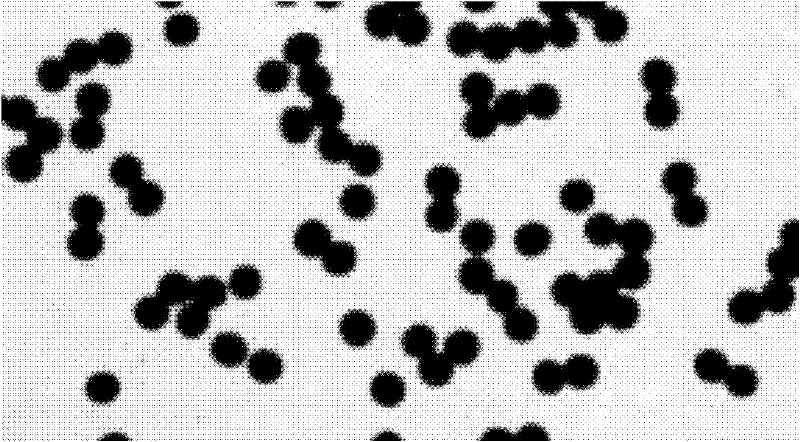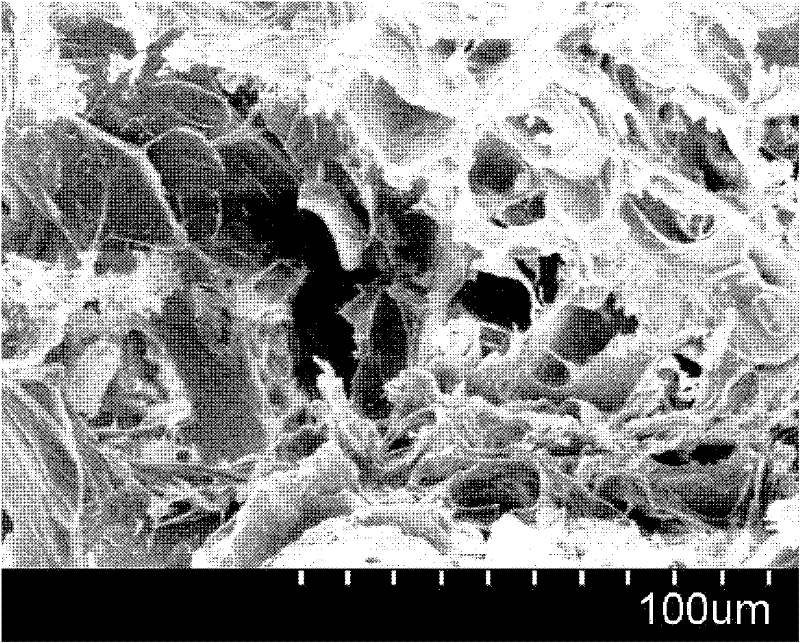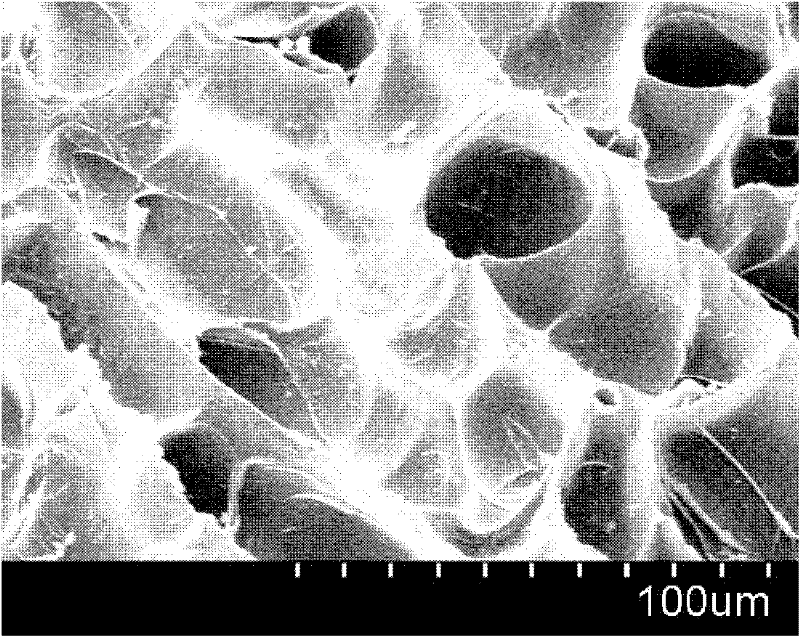Preparation method of macroporous cross-linked sodium alginate gel beads
A technology of sodium alginate, gel ball, applied in chemical instruments and methods, other chemical processes, alkali metal compounds, etc.
- Summary
- Abstract
- Description
- Claims
- Application Information
AI Technical Summary
Problems solved by technology
Method used
Image
Examples
Embodiment 1
[0024] Step 1: Dissolve 8g of sodium alginate and 32g of sodium sulfate in 400mL of deionized water.
[0025] The second step: drop the above solution into 500ml of 5% calcium chloride solution through a 0.5mm pinhole, and stir the calcium chloride solution at the same time. After the dropwise addition was complete, it was stirred for 8 hours.
[0026] The third step: filter the alginic acid gel prepared in the second step with gauze, and wash it with ethanol.
[0027] Step 4: Measure 50mL of the above-mentioned alginic acid gel balls into a 250mL three-necked flask, add 50mL of epichlorohydrin and 5g of NaOH, stir, raise the temperature to 60°C, and react for 8 hours. Cool to room temperature, filter out the cross-linked alginate gel balls with gauze, and wash with ethanol.
[0028] Step 5: Place the cross-linked alginic acid gel balls prepared above in 100 mL of 0.1M EDTA solution for 4 hours to dissolve the calcium sulfate in the cross-linked alginic acid gel balls, and r...
Embodiment 2
[0037] Step 1: Dissolve 8g of sodium alginate and 16g of sodium sulfate in 400mL of deionized water.
[0038] The second step: drop the above solution into 500ml of 5% calcium chloride solution through a 0.5mm pinhole, and stir the calcium chloride solution at the same time. After the dropwise addition was complete, it was stirred for 8 hours.
[0039] The third step: filter the alginic acid gel prepared in the second step with gauze, and wash it with ethanol.
[0040] Step 4: Measure 50mL of the above-mentioned alginic acid gel balls into a 250mL three-necked flask, add 50mL of epichlorohydrin and 5g of NaOH, stir, raise the temperature to 60°C, and react for 8 hours. Cool to room temperature, filter out the cross-linked alginate gel balls with gauze, and wash with ethanol.
[0041] Step 5: Place the cross-linked alginic acid gel balls prepared above in 100 mL of 0.1M EDTA solution for 4 hours to dissolve the calcium sulfate in the cross-linked alginic acid gel balls, and r...
Embodiment 3
[0047] Step 1: Weigh 8g of sodium alginate and dissolve it in 400mL of deionized water.
[0048] The second step: drop the above solution into 500ml of 5% calcium chloride solution through a 0.5mm pinhole, and stir the calcium chloride solution at the same time. After the dropwise addition was complete, it was stirred for 8 hours.
[0049]The third step: filter the alginic acid gel prepared in the second step with gauze, and wash it with ethanol.
[0050] Step 4: Measure 50mL of the above-mentioned alginic acid gel balls into a 250mL three-necked flask, add 50mL of epichlorohydrin and 5g of NaOH, stir, raise the temperature to 60°C, and react for 8 hours. Cool to room temperature, filter out the cross-linked alginate gel balls with gauze, and wash with ethanol.
[0051] Step 5: Place the cross-linked alginic acid gel balls prepared above in 100 mL of 0.1M EDTA solution for 4 hours to dissolve the calcium sulfate in the cross-linked alginic acid gel balls, and repeat the oper...
PUM
| Property | Measurement | Unit |
|---|---|---|
| Adsorption capacity | aaaaa | aaaaa |
Abstract
Description
Claims
Application Information
 Login to View More
Login to View More - R&D
- Intellectual Property
- Life Sciences
- Materials
- Tech Scout
- Unparalleled Data Quality
- Higher Quality Content
- 60% Fewer Hallucinations
Browse by: Latest US Patents, China's latest patents, Technical Efficacy Thesaurus, Application Domain, Technology Topic, Popular Technical Reports.
© 2025 PatSnap. All rights reserved.Legal|Privacy policy|Modern Slavery Act Transparency Statement|Sitemap|About US| Contact US: help@patsnap.com



